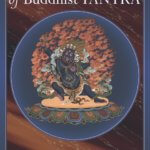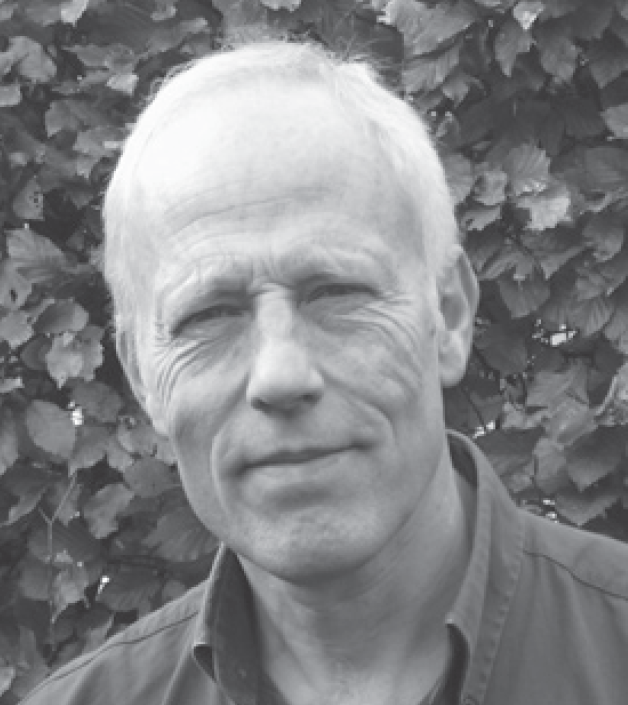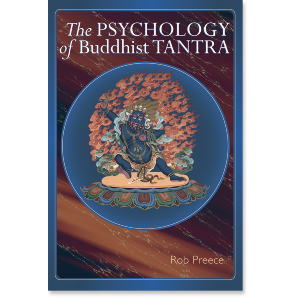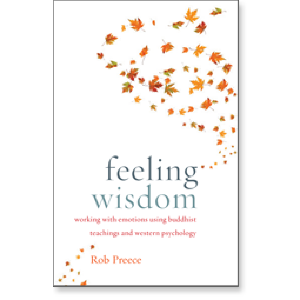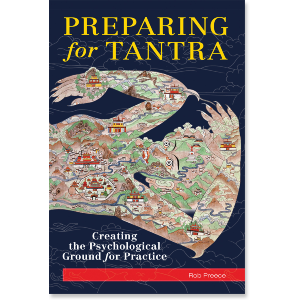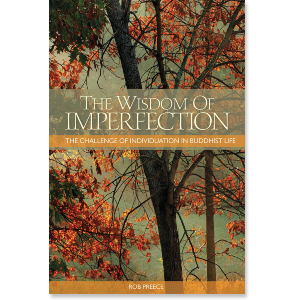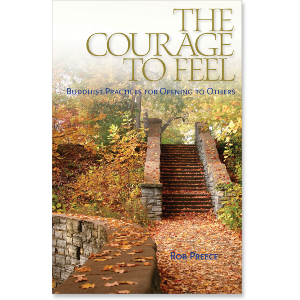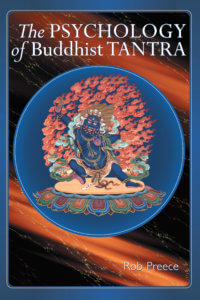
MEDITATION RETREAT
The alchemical vessel of meditation retreat is very powerful. The Tibetan word for retreat, samlado, means, literally, “to sit or stay within boundaries,” and the retreat situation is a place where the boundaries within which you live are defined specifically for the purpose of meditation. These boundaries may demand not speaking, not reading distracting literature like newspapers, and meeting only specific people. There may be defined geographical boundaries beyond which you do not go, and specific activities performed each day. The body, speech, and mind are placed within this context—the vessel—and whatever arises from the unconscious is what you work with. So long as you maintain your self-discipline, the energy of whatever arises is held, and transformation can take its course. This can make retreat uncomfortable, particularly over long periods.
In one retreat of over six months, I experienced weeks of powerful sexual fantasies principally resulting from the deity I was practicing, which was intended to evoke and transform such feelings. For a while I found the intensity of energy almost intolerable, but by remaining within the clearly defined retreat boundaries, and giving the energy a vehicle for its transformation in the meditation practice, the intensity eventually began to subside.
After a time the fantasies ceased, and I noticed a change had gradually taken place through the process of meditation. The wild, crazy energy that had been evoked was changing into something much freer and more blissful. The bliss was accompanied by an openness or spaciousness that enabled it to be experienced without the grasping that would turn it into sexual desire and frustration. I sensed that for the first time the wild, uncivilized rawness of my sexual energy was falling within my own control rather than my being its slave.
In retreat the practitioner enters a process that is an intense example of transformation. The practitioner is the prima materia, and in one sense the body is also the container in which the transformation takes place. The body is the vessel that contains the elemental forces of the unconscious; the emotions, the instincts, and their related psychological patterns and impulses. The use of deity practices and ritual sadhanas (methods of transformation) in Tantra give a focus to retreat and act as a catalyst for transformation. They provide the forces awakening within the body with a symbolic vehicle through which they can be channeled. When undertaken skillfully and with guidance, retreat can be a profound experience in which the retreat boundaries exist to support the inner process.
There are inevitable dangers with retreat, and fanatical extremism leads to trouble. If a meditator pushes too hard when he or she is not ready, the result can be disastrous. I recall a man who left the army to come and live in the Buddhist community where I once lived. He had heard that by gaining samadhi (Tib. shi né, “tranquil abiding,” often called “single-pointed concentration”) in meditation he could develop superhuman powers. He became utterly determined to gain this power, which takes long periods of intense, highly disciplined meditation in retreat. He prepared a room in the basement and was told by his teacher to meditate on a particular practice. Within a week of fervent pushing and squeezing, his anger and frustration were at boiling point; he burst out of retreat and made his way to the nearest pub. When last heard of, he had joined the French Foreign Legion.
PURIFICATION
We might think that the concept of purification implies a dualism between that which is impure, and therefore undesired, and that which is pure and desired. This may also seem to contradict the essential meaning of Buddha nature, which is that all phenomena, whether pure or impure, are empty of inherent existence. It is our ignorance and dualistic thinking that judges and discriminates one from the other. This implies that the primary obscuration to be purified is dualistic thinking and its consequences.
The ultimate purification is indeed the realization of emptiness experienced moment by moment. However, because attention in Tantra is focused upon the energy-winds, purification on this level helps to clear the underlying obstructions that prevent an experience of nonduality. It is defiled energy-winds that are the underlying or hidden cause of dualistic ignorance.
While the conventional language of Tantra speaks of purification, we can equally see this as a process of healing. In Action Tantra, healing and purification are a significant aspect of the relationship to the deity through visualizations and mantra recitations. Its effectiveness arises from the intimate relationship between visualization, mantra, and the energy-winds. Approaching the healing process is relatively simple and extremely powerful if practiced with strong concentration, clarity, and an appreciation of the quality of the deity. Even after a brief period of mantra recitation the effect can be dramatic; the mind feels clearer and the energy in the body smoother and more fluid.
The process of healing visualization begins by generating or invoking the presence of the deity to be practiced. The deity is usually visualized either in the space in front of the meditator, or a few centimeters above the crown of the head. The meditator often makes certain prayers and perhaps offerings as a preliminary practice to establish an open receptive relationship with the deity.
Although traditionally this is done formally, through the recitation of the sadhana, the important thing is to make a personal connection. The disadvantage with reciting traditional prayers in an unfamiliar language can be that they may not generate the feeling of openness and devotion that needs to be present for the practice to be effective. A personal style that includes our own particular life issues, problems, emotional distresses, and sicknesses as part of this process may be important to include in our reflections. We may wish to clear certain obstacles or limitations, or to cultivate qualities to help us, but when we do not make this personal link the practice can be dry and without feeling.
Healing and purification visualizations are usually of light and blissful nectar washing through the body, visualized as the practitioner simultaneously recites the mantra of the deity. This gradually cleanses, heals, or purifies the energy-winds, freeing them from blocked, sick, tired, toxic states. It can be helpful to imagine the sickness, emotional blocks or hindrances leaving the body as black substances. Visualizations of this kind are increasingly common in the Western healing world, particularly when working with diseases such as cancer. There are relatively few dangers, and these visualizations are simple to learn.
Increasingly, our health, both physical and psychological, is affected by the environments in which we live and work. The intensity of emotional stress from work will invariably leave a residue within our nervous systems. The energetic quality of city life is often extremely unhealthy. Pollution pervades our world and feeds into our bodies through the air, our food, and our water. All these conditions contribute to a toxicity in our subtle energy that is extremely detrimental. Finding a simple way to clear this toxicity is important for our general state of health, as a way to prevent more severe illness. The purification practices of Action Tantra, while not clearing all the gross effects of pollution in our bodies, will certainly help to clear toxic energy arising from stress.

